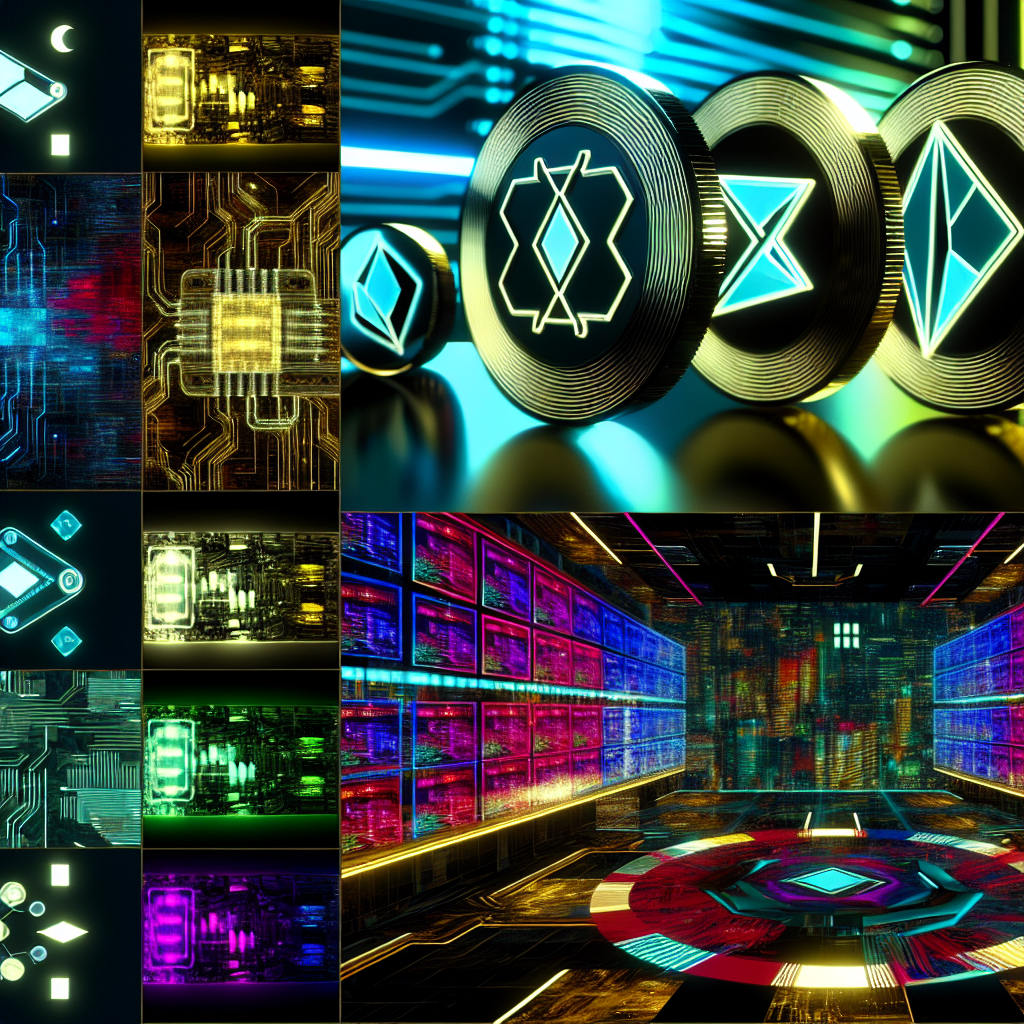Cardano (ADA): A Comprehensive Exploration of Its Features and Blockchain Technology
Introduction to Cardano
In the realm of cryptocurrencies, Cardano has emerged as a significant player, captivating the attention of investors and developers alike. Launched in 2017 by Charles Hoskinson, one of the co-founders of Ethereum, Cardano is often hailed for its scientific approach to blockchain technology. Unlike many cryptocurrencies that prioritize speed and transaction volume, Cardano focuses on sustainability, scalability, and interoperability. This article delves into the unique aspects of Cardano, exploring its underlying blockchain technology, features, and potential impact on the cryptocurrency landscape.
The Science of Cardano’s Blockchain
At the heart of Cardano lies its blockchain, which is distinctively designed on a proof-of-stake (PoS) consensus mechanism known as Ouroboros. This innovative approach sets Cardano apart from the traditional proof-of-work (PoW) systems employed by Bitcoin and Ethereum. Ouroboros is not only energy-efficient but also allows for a more secure and scalable network. By utilizing PoS, Cardano enables users to validate transactions and create new blocks based on the amount of ADA they hold and are willing to “stake.” This means that the more ADA a user possesses, the higher their chances of being chosen to validate transactions, thus contributing to network security while minimizing energy consumption.
Layered Architecture
One of the standout features of Cardano is its layered architecture, which separates the settlement layer from the computation layer. The settlement layer is where transactions occur, while the computation layer handles smart contracts and decentralized applications (dApps). This separation allows for greater flexibility, as changes to one layer can be made without affecting the entire system. Additionally, this architecture enhances security, as the settlement layer can focus on handling transactions and ensuring that they are executed accurately.
Smart Contracts and dApps
Cardano’s approach to smart contracts and decentralized applications is particularly noteworthy. With the introduction of the Alonzo upgrade in September 2021, Cardano enabled developers to create and deploy smart contracts on its blockchain. This marked a significant milestone for Cardano, as it opened the door for a wide range of dApps, from decentralized finance (DeFi) platforms to non-fungible token (NFT) marketplaces. The smart contract functionality is designed to be secure and scalable, allowing developers the freedom to innovate without compromising on safety.
Interoperability and Governance
Interoperability is a crucial aspect of Cardano’s vision. The platform is designed to interact seamlessly with other blockchains, facilitating the transfer of value and information across different networks. This functionality is essential for creating a more connected blockchain ecosystem, where users can leverage the strengths of various platforms without being confined to a single chain.
Moreover, Cardano embraces a unique governance model that empowers its community. The platform employs a treasury system that allows ADA holders to propose and vote on future developments and upgrades. This democratic approach ensures that the network evolves in a manner that reflects the interests of its users, fostering a sense of ownership and collaboration within the ecosystem.
Sustainability and Environmental Considerations
In an age where environmental concerns surrounding cryptocurrencies are at the forefront, Cardano takes pride in its sustainable design. The PoS consensus mechanism significantly reduces energy consumption compared to PoW systems. This commitment to sustainability is not merely a marketing ploy; it reflects a genuine effort to create a blockchain that can endure without exhausting natural resources. As the world shifts toward greener technologies, Cardano’s energy-efficient model positions it favorably in the evolving landscape of blockchain solutions.
Community and Development
The success of any blockchain project is intricately tied to its community and development efforts. Cardano has cultivated a vibrant community of developers, researchers, and enthusiasts who contribute to its growth. The platform’s development is guided by a research-driven approach, with academic collaboration playing a vital role in shaping its features. This emphasis on empirical evidence and peer-reviewed research sets Cardano apart from many other projects, fostering a culture of innovation that is both grounded and forward-thinking.
Use Cases and Real-World Applications
As Cardano continues to mature, the potential use cases for its technology are becoming increasingly evident. The platform’s focus on DeFi, identity management, and supply chain solutions highlights its versatility. For instance, Cardano’s ability to facilitate secure identity verification could revolutionize how individuals interact with services in a digital age, enhancing privacy and reducing fraud. Additionally, its applications in supply chain management can provide transparency and traceability, addressing some of the pressing issues faced by modern logistics.
The Road Ahead: Challenges and Opportunities
While Cardano has made significant strides, it is not without its challenges. The competitive landscape of blockchain technology is fierce, with numerous projects vying for attention and market share. Cardano must continually innovate and adapt to stay relevant, particularly in the face of evolving regulatory environments and technological advancements. However, its solid foundation, commitment to research, and community-driven governance position it well for future growth.
Conclusion
In summary, Cardano represents a compelling evolution in the cryptocurrency space, emphasizing scientific rigor and a holistic approach to blockchain technology. Its unique features, from the Ouroboros PoS consensus mechanism to its layered architecture and commitment to sustainability, distinguish it from many other cryptocurrencies. As it continues to develop, Cardano’s potential to influence the future of decentralized finance, identity verification, and beyond becomes increasingly tangible. The journey of Cardano is one worth watching, as it may well shape the future of blockchain technology in profound ways.


